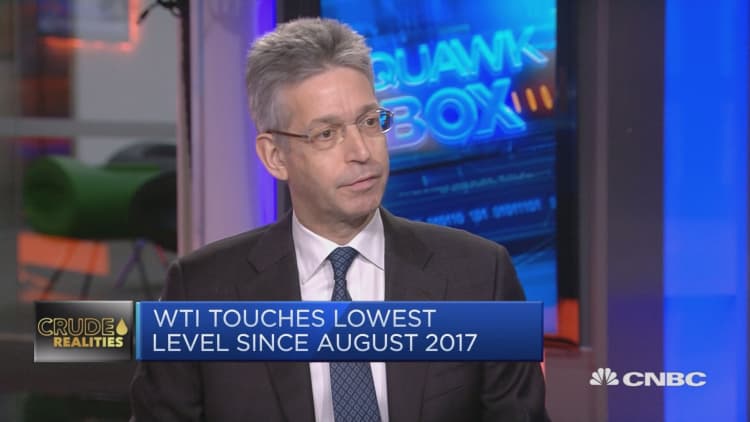
Oil prices stabilized on Wednesday after a "toxic mix" of market forces triggered one of the biggest falls for years.
However, despite a protracted sell-off in crude futures, the meteoric rise of U.S. shale should continue undeterred over the coming months, analysts told CNBC.
"In short, as much as the recent price slump has injected a fresh dose of uncertainty, it is unlikely to derail the U.S. shale engine," Stephen Brennock, oil analyst at PVM Oil Associates, said in a research note published Wednesday.
"The fact is that U.S. tight oil supply is expected to expand by at least 1 million bpd in 2019. In doing so, it will go a long way to cementing America's newfound position as the world's biggest oil producer." "For now, when it comes to the U.S. shale patch, the glory days are far from over," Brennock said.
Since climbing to four-year highs in early October, crude futures have tumbled by more than a third. The latest wave of heavy selling comes at a time when the energy market as well as the global economy is gripped by a flurry of bearish factors.
Heightened concerns of oversupply, reports of swelling inventories, forecasts of record U.S. and Russian output and intensifying concerns about a slowing global economy have all placed downward pressure on the value of a barrel of oil.
International benchmark Brent crude traded at around $56.61 on Wednesday, up around 0.6 percent, while U.S. West Texas Intermediate (WTI) stood at around $46.59, more than 0.75 percent higher.
Should Trump take credit for falling oil prices?
OPEC and allied non-OPEC oil producers including Russia agreed earlier this month to curb output by 1.2 million barrels per day (bpd). That's equivalent to more than 1 percent of global demand, in a bid to drain tanks and boost prices.
But, the cutbacks do not go into effect until January, and Russia has warned that it will only gradually taper off output.
Meanwhile, production has been at or near record highs in the U.S., Russia and Saudi Arabia. And the White House has said shale production could climb to more than 8 million bpd for the first time by the end of December.

President Donald Trump has previously claimed credit for falling oil prices, glossing over a range of market fundamentals by saying last month that the recent pullback for crude futures was down to him.
The dramatic downturn has provided an unexpected holiday bonus for American consumers, with fuel prices also tumbling amid fears the oil market could soon be awash with crude.
When asked whether Trump deserved recognition for depressing crude futures in recent weeks, Martin Fraenkel, president of S&P Global Platts, told CNBC: "That's a good question… But I think the other good question is: what does Trump want with the oil price?"
"Don't forget that on the one hand he doesn't want high gasoline prices — that's not good for the consumers. But, which is the big emerging energy superpower in the world these days? It's the U.S.," Fraenkel said on Wednesday.


